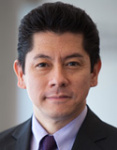Archived Content
This page is archived and provided for historical reference. The content is no longer being updated, and some of the information may have changed over time and could be outdated or inaccurate.
By Pablo Joo, M.D.
The Albert Einstein College of Medicine (Einstein) was one of nine medical schools to originally receive funding from the Office of Behavioral and Social Sciences Research (OBSSR) to integrate behavioral and social sciences into its curriculum. As a result, Einstein established an innovative longitudinal “Patient, Doctors and Communities” course across third-year clerkships emphasizing communications skills, professionalism, and behavior change.
This course allowed Einstein to meet the first four domains of the Institute of Medicine (IOM) report, Improving Medical Education (mind-body interactions; patient behavior; physician role and behavior; and physician-patient interactions). However, it was a 2011 partnership with Warren Alpert Medical School of Brown University (AMS) through the OBSSR R25 grant that enabled Einstein to enhance the last two IOM domains (sociocultural issues in health care and health policy/economics). AMS brought to the table substantial experience with emphasizing public health in its curriculum.
Einstein and AMS enjoyed many successes during their partnership, and longitudinal population health curriculum are now in place at both schools. In fact, in part as a result of this grant, AMS developed a four-year, dual-degree program called the Primary Care-Population Medicine (PC-PM) program.
Graduates of the PC-PM program receive a medical degree and a Master of Science degree in population medicine. In addition, there is a scholarly concentrations program in place at both schools. These programs provide students an opportunity to explore areas related to medicine that are not commonly taught in medical school. For example, students can do scholarly work in medical education, health policy, or medical humanities.
Providing Behavioral and Social Science in Medical Education Proves Critical to Well-Rounded Education
With established population health and scholarly concentration curricula in place, Einstein and AMS shifted their focus to the rapidly evolving health care system. While medical students learn that the U.S. health system is expensive, unsafe, and inefficient, doctors may not fully understand of the impact their clinical decisions have on patients and society. Einstein and AMS noted that medical students receive little to no training in the stewardship of patients and resources, nor are they taught how to communicate with patients about this stewardship.
As Einstein and AMS were engaging in conversations about how to advance training in stewardship, the American Board of Internal Medicine launched its Choosing Wisely campaign. Specialty organizations participating in the Choosing Wisely formulated lists of practices doctors and patients should question and discuss to make wiser decisions about appropriate care. These lists are based on evidence, patient and society costs, safety, and patient preference.
Choosing Wisely Initiative Inspires Program Featuring Behavioral and Social Sciences in Medical Education
Inspired by Choosing Wisely, Einstein and AMS developed a curriculum tied to the campaign that featured new instructional sessions. In addition, the schools developed new tools to assess whether students possess the knowledge and skills to factor in patient and resource stewardship when making evidence-based decisions about patient care. These tools also evaluate students’ ability to communicate this decision making process to patients and formulate a mutual plan with patients.
Einstein and AMS developed two objective structured clinical examination (OSCE) cases to measure students’ abilities to meet these Choosing Wisely learning objectives. The first case focuses on a patient who presents with lower back pain and no emergency signs who is asking for an MRI. Success is measured by the student first not ordering the MRI and then explaining their decision-making process to the patient. Students will experience this case at the end of their 3rd year of medical school.
In the second case, a patient presents with symptoms of a viral upper respiratory infection asking for antibiotics. Success in this case is measured by a student appropriately negotiating non-antibiotic-based care for this patient. This case will be part of the Family Medicine clerkship at both schools.
Ultimately, Einstein and AMS aim to develop valid and reliable OSCE cases to assess student communication skills to help patients “choose wisely.” The ultimate goal is graduating physicians who can lead a culture shift and promote stewardship.
About the Author
 Pablo Joo, M.D.
Pablo Joo, M.D.
Pablo Joo, M.D., is Associate Professor of Family and Social Medicine at Albert Einstein College of Medicine. He previously co-directed the Family Medicine residency program at New York Presbyterian and was appointed as a Family Medicine clerkship director at Columbia P&S and then at Einstein. He is currently the Assistant Dean for Medical Education at Einstein. He has published work on enhancing preventive medicine education of medical students via online education and on outcomes of a needs assessment of students’ perceptions regarding the concept of the Patient-centered Medical Home. He has developed team-based learning and flipped classroom methodologies to teach preventive medicine, quality improvement principles, medical economics, and primary care to medical students. He currently chairs the Population Health and Practice of Medicine Working Group, which has established a longitudinal curriculum for Einstein students on population health content including public health; community, occupational, and environmental health; health disparities and social determinants of health; quality and patient safety; the U.S. health care system; inter-professional team care; and value-based care.
Photo Credit: Shutterstock/Matej Kastelic









